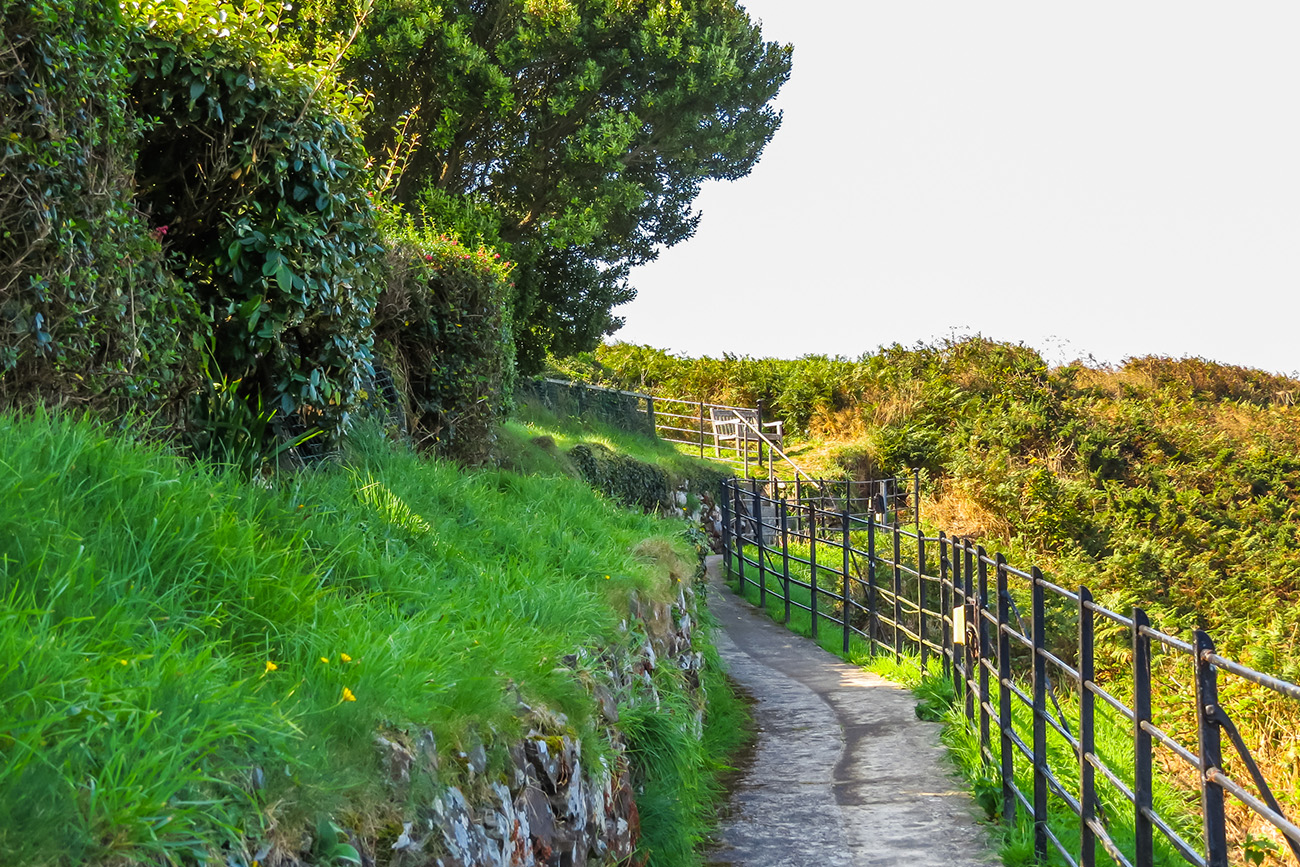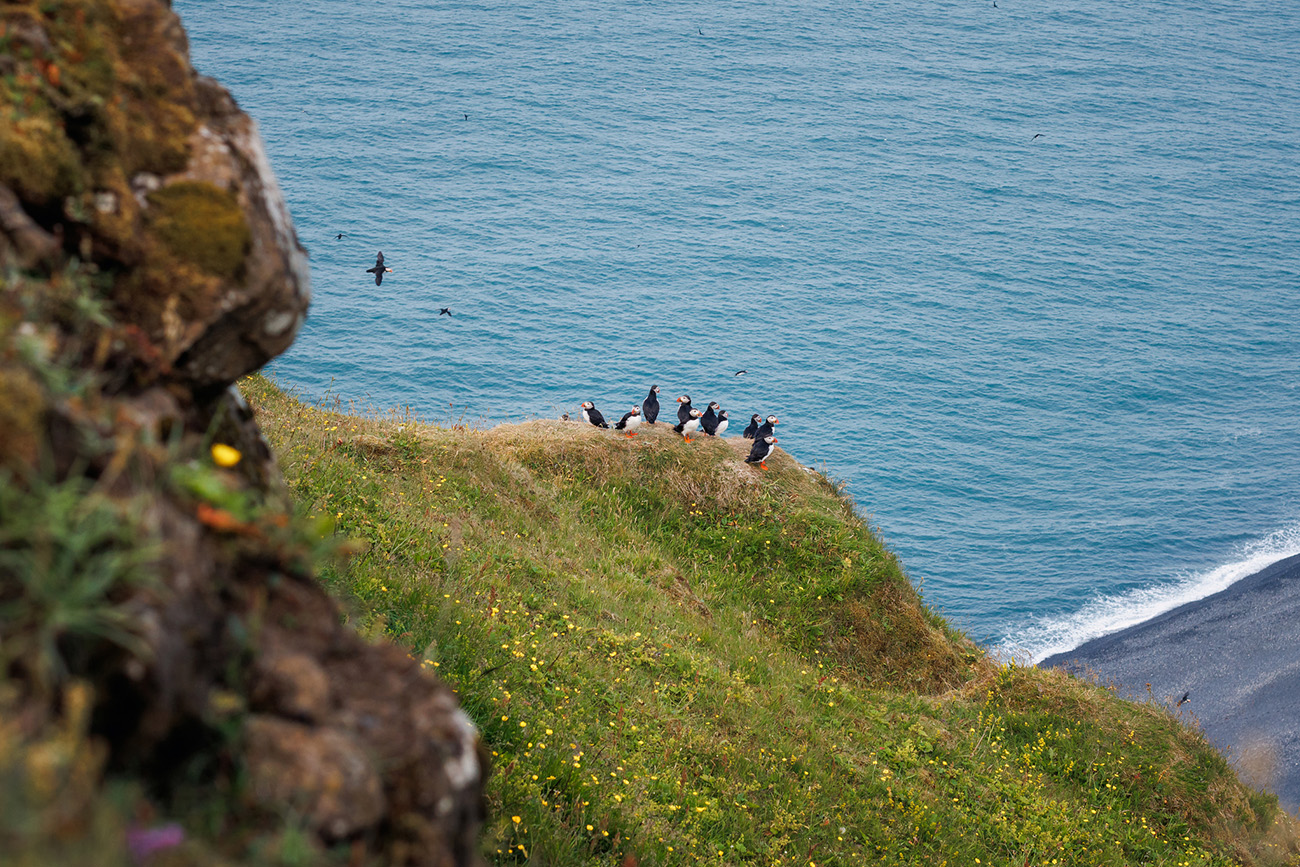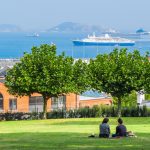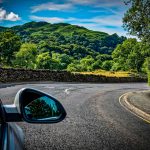
Nestled in the heart of the Channel Islands, Guernsey’s Forest is a verdant oasis that has stood the test of time. Spanning over 270 acres (109 hectares), this ancient woodland is a testament to the island’s rich natural heritage. Situated in the central parish of St. Martin, the forest’s strategic location has played a pivotal role in its preservation throughout the centuries.
Welcome to Guernsey’s Forest
The origins of Guernsey’s Forest can be traced back to the Neolithic period, when the island’s earliest inhabitants sought refuge and resources within its sheltering embrace. Over the millennia, the forest has weathered invasions, wars, and the ever-changing tides of human civilization, yet it has persevered, adapting and evolving with each passing era.
Many of the tales and legends passed down through generations revolve around mythical creatures, such as the “Tchian d’Bouôlées,” a mischievous woodland sprite believed to lead travellers astray. (no, not a spirit 😉 a ‘sprite’ is like an elf)
Guernsey’s Forest stands as a living museum, a tapestry woven from the threads of history, ecology, and cultural significance.
This ancient woodland serves as a sanctuary for a diverse array of plant and animal species. It is home to a remarkable variety of bird species, including the elusive Guernsey partridge, whose distinctive call echoes through the canopy, the red squirrel and the Guernsey bank vole find refuge in the dense undergrowth, while Roe deer and rabbits can often be spotted grazing in the clearings, and buzzards and kestrels soar overhead, keeping a watchful eye.
Beyond its role as a haven for wildlife, Guernsey’s Forest plays a crucial part in mitigating the effects of climate change. The trees act as natural carbon sinks, absorbing and storing vast amounts of carbon dioxide from the atmosphere, helping to offset the island’s carbon footprint.
The intricate root systems and dense vegetation help prevent soil erosion, regulate water cycles, and maintain the delicate balance of the local ecosystem. Its presence contributes to the preservation of air and water quality.
Historical Background
As Guernsey’s population grew, the forests gradually receded, with large swaths of land being cleared for agriculture and settlement. However, pockets of woodlands remained, often in areas deemed unsuitable for farming or too difficult to access. These remnants of the island’s primeval forests became cherished natural havens, serving as refuges for wildlife and places of recreation.
During the medieval period, Guernsey’s forests took on a new significance as sources of timber for shipbuilding and fortifications. The island’s strategic location in the English Channel made it an asset, and the forests were extensively harvested to support the construction of naval vessels and coastal defences. This period saw the emergence of strict regulations governing the use of the island’s woodlands, ensuring their sustainable management for the benefit of the community.
As the centuries passed, Guernsey’s forests faced numerous threats, including overexploitation, disease, and the introduction of invasive species. However, the island’s community developed a deep appreciation for these natural treasures, and efforts were made to preserve and protect the remaining woodlands. In the 19th and 20th centuries, conservation initiatives were launched, and new areas were designated as protected forests, ensuring their survival for future generations.
Recreational Activities
Hiking enthusiasts can embark on a network of well-maintained trails that wind through the forest, providing breathtaking scenes. One of the most popular hiking routes is the Cliff Path Trail, which hugs the island’s rugged coastline and offers stunning views. Along the way, hikers can catch glimpses of the island’s unique flora and fauna, including the iconic Guernsey Lily and the mysterious Puffin colony.
For those seeking a more leisurely experience, the forest also boasts several picnic areas and scenic lookout points, perfect for a family outing or a romantic picnic.
Bird watching is another popular activity in Guernsey’s Forest, attracting avid birdwatchers from around the world. The forest is home to a diverse array of bird species, including the Eurasian sparrowhawk, the European robin, and the melodious willow warbler. Dedicated bird hides and observation platforms offer excellent vantage points for spotting and studying these feathered creatures in their natural habitat.
Adventure seekers can also indulge in mountain biking along the forest’s rugged trails, while rock climbers can challenge themselves on the island’s iconic coastal cliffs. For those seeking a more relaxed experience, the forest offers opportunities for photography, nature journaling, and simply enjoying the serenity of the great outdoors.

Puffin colony
Cultural Significance
The practice of gathering wildflowers, berries, and mushrooms from the Forest has been a cherished activity for families, fostering a sense of community and connection to the land. And it has served as a backdrop for various celebrations and festivals, such as the annual “Lé Viaer Marchi” (The Old Market), where locals gather to showcase their crafts and produce from the Forest.
Local artists and writers have captured the beauty and essence of the Forest through their work, depicting its diverse flora and fauna, and the ever-changing landscapes throughout the seasons.
In essence, the Forest in Guernsey has woven itself into the fabric of the island’s cultural tapestry, shaping its folklore, traditions, artistic expression, and culinary heritage. It serves as a reminder of the deep-rooted connection between the people of Guernsey and their natural environment, a bond that has endured through generations and continues to shape the island’s identity.
So, through continued efforts in education, responsible tourism, and collaborative stewardship, we can ensure that this natural wonder remains a source of pride and inspiration for Guernsey. By fostering a deep appreciation for the forest’s intrinsic value and promoting its preservation, we can safeguard this ecological gem for years to come, allowing future generations to experience the serenity and beauty that has captivated the local community and tourists for centuries.
Would you like to explore more of Guernsey? Then don’t miss out on the following article: Guide to a healthy day in Guernsey





